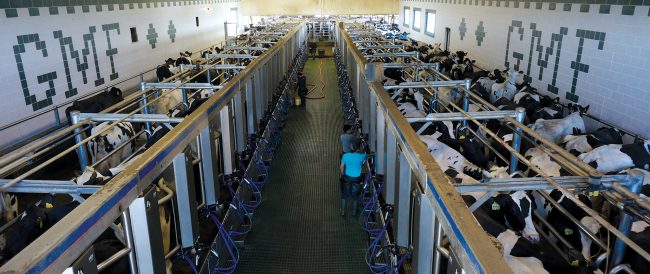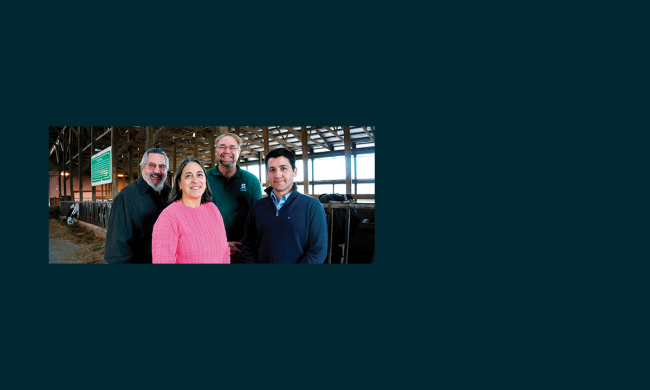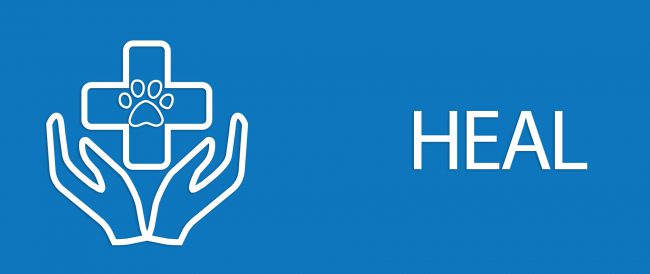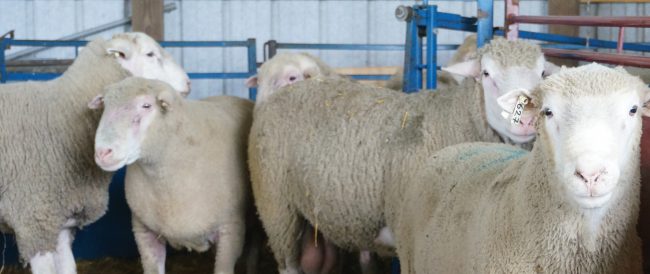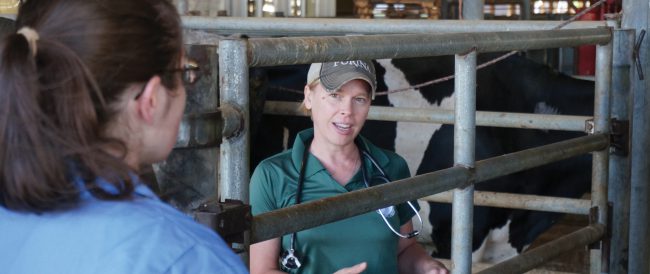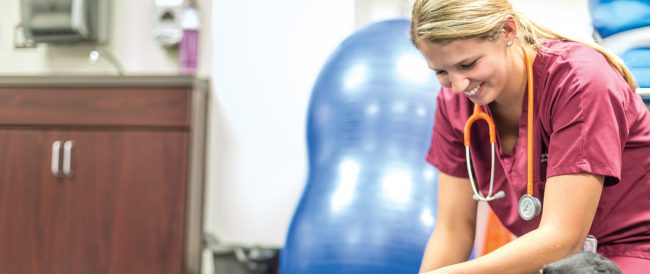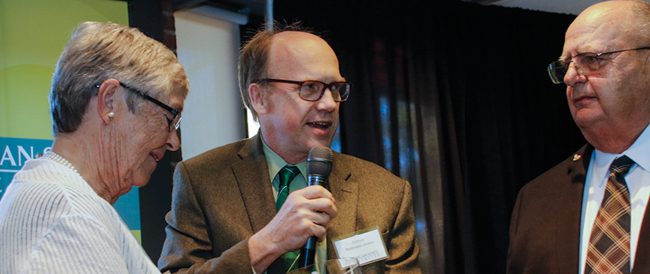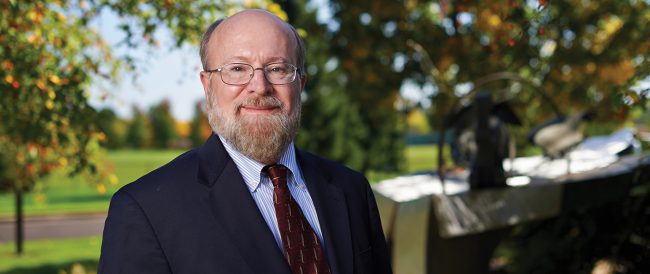 Read More
Read More
Veterinarians Are Integral to the Process.
By Jamie DePolo
For most people, the word “veterinarian” likely conjures up the image of a white-coated doctor examining a dog, cat, cow, or pig. But an enormous part of veterinary medicine focuses on preventing illness in people—crucial work that includes preventing transmission of diseases, such as Lyme disease, rabies, or bovine tuberculosis from animals to people; ensuring that food processing plants follow regulations for sanitation and hygiene; and guaranteeing that animals used to make human food products are healthy.
According to estimates from the Centers for Disease Control and Prevention, approximately 1 in 6 people in the United States, or 48 million, are sickened by foodborne illness each year. Roughly 128,000 people are hospitalized and approximately 3,000 people die from foodborne disease. Statistics from the US Department of Agriculture (USDA) estimate foodborne illnesses cost the economy more than $15.6 billion per year, including hospital visits and medicine. Still, this estimate does not factor in food industry costs, including loss of consumer confidence in a brand, recall expenses, or costs to taxpayers for local, state, and federal agencies that respond to outbreaks.

Human health is inextricably linked to animal health. Approximately 60 percent of all human diseases and 75 percent of the new diseases that have affected humans throughout the past 10 years have been caused by pathogens that originated in an animal or from products with animal origins, including HIV-1 and -2, the influenza virus, the Ebola virus, and the coronaviruses. A 2012 report funded by CGIAR, a global research partnership, mapped zoonotic diseases—diseases transmitted between animals and people—and found that 13 zoonotic diseases, including leptospirosis, rabies, zoonotic tuberculosis, and anthrax, kill more than 2.2 million people each year. While many of these fatalities are in developing countries, tens of thousands of people in the United States become ill from diseases spread between animals and people, including Lyme disease and Rocky Mountain spotted fever, which are spread by ticks, and West Nile disease, which is spread by mosquitoes.
“I do believe veterinarians are some of the best people to protect human and animal health... Veterinarians are trained to treat herds, so they’re likely more familiar with population health concepts.”
— Dr. Melinda Wilkins
“We need veterinarians to understand how people are exposed to zoonotic diseases, as well as to foodborne pathogens,” says Melinda Wilkins, assistant professor for the Department of Large Animal Clinical Sciences and director of the MSU Online MS in Food Safety Program. “The vast majority of new diseases are either vector-borne [most vectors are blood-sucking creatures, such as ticks and mosquitoes] and/or zoonotic. Right now, we see many veterinary students pursing a Master’s degree in public health in addition to a DVM degree because they’re in a unique position to address these issues.”
Wilkins herself has a Master’s degree in public health, as well as a Doctorate in veterinary medicine and a PhD in veterinary large animal clinical sciences, with a focus on epidemiology. She worked for the Michigan Department of Community Health in the Division of Communicable Diseases for 12 years, serving as division director from 2004 to 2011, so she has witnessed first-hand the essential role veterinarians play in maintaining the public’s health. For her, food safety clearly falls under the umbrella of public health.
According to Wilkins, diseases that are zoonotic also can hamper food production by making production less efficient and more expensive, as well as affect the sale of food produced from animals both nationally and internationally.

“In developing countries, the protein quality and quantity in people’s diets needs to be improved—there needs to be more animal-sourced protein,” says Wilkins. “You have to eat a lot of plant foods to get the same amount of protein you would from a small amount of animal-sourced protein. But this needs to be done in a sustainable way. We don’t need more cows, goats, or water buffalo. We need more productive and healthier cows, goats, and water buffalo. Veterinarians can keep animals healthier and get more food to the end-user. Veterinarians also can help reduce waste in the food chain.”
As animal health experts, veterinarians work in the USDA Animal and Plant Health Inspection Service at all levels to help exporters understand the requirements for selling animal food products to other countries, as well as protect the health of this country’s people and animals by preventing the introduction of diseases. To learn more about these skills at MSU, all veterinary medicine students take veterinary epidemiology and veterinary public health in their third semester.
“The veterinary public health class includes some food safety content, and the epidemiology class gives students tools for public health practice,” Wilkins explains. “There also are electives, such as the veterinary public health field experience clerkship or the veterinary public health research clerkship, that students can take. There are usually about six to eight students who are working on both their DVM and their MS in food safety as dual degrees, so they obviously get the full immersion into food safety. We also have many students who are working on dual DVM-MPH (Master’s in public health) degrees.”
Wilkins says that veterinarians are involved in every aspect of food safety and public health, including diagnosing and treating disease, managing surveillance programs, and inspecting animals, slaughterhouses, and food products.
“I do believe veterinarians are some of the best people to protect human and animal health, for a number of reasons,” says Wilkins. “First, they’re extremely smart. Veterinary school can be more competitive than medical school, so the veterinary schools are selecting the brightest of the bright. Also, I think it’s an easier transition into public health to go from herd health to population health. Physicians are trained to treat one person in-depth. Veterinarians are trained to treat herds, so they’re likely more familiar with population health concepts.”
Wilkins added that veterinarians also are service-oriented and excellent generalists.
“Veterinarians really care. If you look at the average veterinarian salary, they’re clearly not in it for the money,” Wilkins says. “They’re very altruistic. They have a strong medical background in many animal species, not just one, so it makes sense to add humans to their repertoire.”



